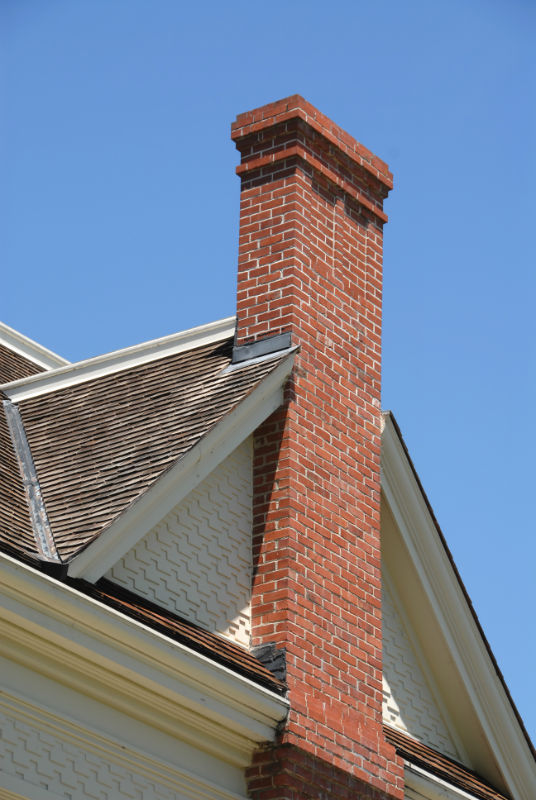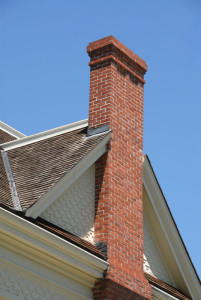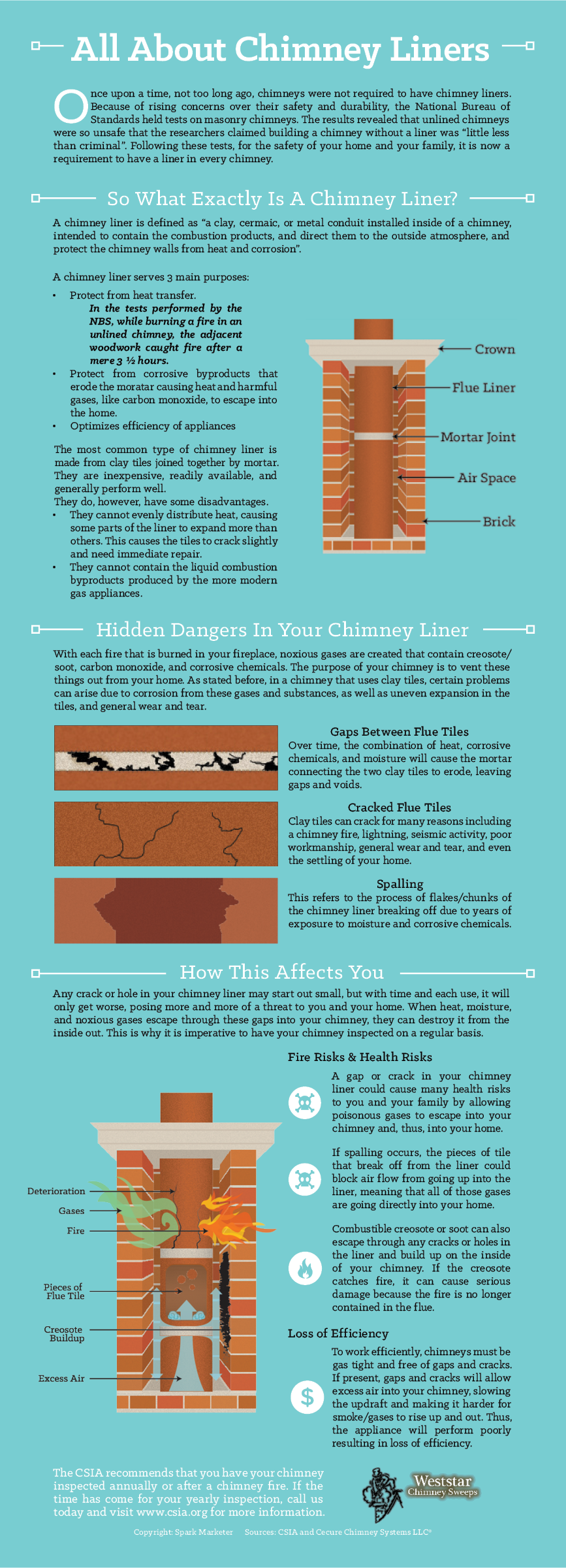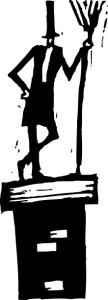
by Mike O'Mara | Mar 15, 2016 | Chimney Maintenance
When you have an older masonry chimney, you may believe that it is immune from any damage because it is constructed well enough to last for a lifetime. However, a masonry chimney can suffer from both exterior and interior damage. You may have seen a chimney with cracked and missing bricks on its exterior, which is most likely caused by erosion from weather elements. The inside of a masonry chimney can also be damaged, and this type of damage is much harder to see. Most masonry chimneys were built with clay tile flue liners, and these tiles can also crack and even fall from the chimney wall. This can lead to a hazardous situation, including carbon monoxide leaking through the cracks and gaps into your home. The Chimney Safety Institute of America (CSIA)-certified chimney sweeps from Weststar Chimney Sweeps have years of experience of inspecting and repairing clay tile liners. We would like to tell you more about clay tile flue liners and how we can repair them so that your chimney works safely.

How does a clay tile liner work?
When the chimney is being built, masonry workers will stack clay tiles upon each other, and according to Inspect-a-Pedia, refractory cement is placed in the joints in between these tiles to create a continuous smooth walled vent. There should be a space of one half of an inch to one inch in between the flue and the masonry surround because when the flue is heated, the liner expands outward and lengthwise.
How does a clay tile liner become damaged?
The most common reason behind the damage done to clay tile liners is water penetration. This type of damage can be prevented with the installation of a good quality chimney cap, along with a customized flashing system. Chimney fires can also cause a lot of damage to clay tiles. And, of course, these tiles can crack and break apart over the years as normal wear and tear.
How can Weststar Chimney Sweeps repair my clay tile liner?
We are proud to offer chimney relining and restoring services with HeatShield, a specially formulated cerfractory sealant. Our chimney technicians have been trained and approved to use this revolutionary product that allows us to restore and repair clay tile liners in a much easier way than retiling the flue. If your flue is mostly damaged by weakened mortar joints, we can use the HeatShield Joint Repair system, and if your flue has more widespread damage, we can use the HeatShield Resurfacing system. We also can use the HeatShield Sleeve Relining System to restore a clay tile liner that has been damaged significantly. You can trust us to inspect the condition of your liner to know exactly which HeatShield system to use.
If you have seen broken pieces of clay tiles in the bottom of your fireplace, you most likely have a damaged liner. Contact us at Weststar Chimney Sweeps to schedule an appointment for an inspection of your clay tile liner. We will be able to show you photos of the damage within the flue and make repair recommendations to make your chimney safe to use again.
by Mike O'Mara | Jul 9, 2014 | Chimney Maintenance
Prevention is The Cure: Top 3 Chimney Repairs
It’s tough to manage and organize your own home. You have a handful of big and important decisions to make, plus a seemingly never-ending to-do list. You are not only concerned about the well-being and functionality of every aspect of your home, but you also need to think about the safety and security of you and your family.
This sentiment is doubled when homeowners have chimneys in their home. Based on our years of experience here at Weststar Chimney Sweeps, we know what you need to do to optimize performance and safety.

Over the course of your home’s life, your chimney will likely need repair. Here are three of the most common.
To help you further, here are the top 3 parts of the chimney that are usually subjected to repair:
As its name suggests, the chimney crown is located at the top most portion of the chimney. The chimney crown’s main function is that it covers the chimney to prevent moisture from filtering down in the stone or brick walls. Basically, it protects the mortar, which in turn holds everything in place. This part of the chimney is constantly subjected to drastic changes in weather and temperature so with time, the chimney crown may have cracks and leaks that may cause varying degrees of problems.
According to the Chimney Safety Institute of America a chimney liner is a; “clay, ceramic or metal conduit intended to contain the combustion products and direct them to the outside atmosphere”. So basically, your chimney liner not only protects you, your family and your home from the harmful products of combustion and burning, it also protects your chimney and allows it to last longer.
Flashing is done to ensure that your chimney is waterproof and safe. Flashing is basically a sheet of metal which consists of two panel parts. These are installed to make sure that the area where the chimney meets the roof of your home is watertight and safe.
To know your chimney and to avoid huge damages, you need to understand how each part of your chimney works. You need to have an idea what each part is for to see their importance. Once you get to grasp that, you’d be more careful and mindful of your chimney as a whole.
by Mike O'Mara | May 12, 2014 | Chimney Maintenance, fire safety
The exterior wall of your chimney is typically made of masonry. It cannot stand up to excessive heat well, so your flue liner does the job of protecting it.

by Mike O'Mara | Oct 29, 2013 | Uncategorized
What To Expect From A Chimney Inspection
If you’re new to fireplace or stove and chimney ownership, the regular maintenance process may be a little daunting, since there’s a lot to think about, and the words “fire hazard” aren’t exactly soothing. You also may be picturing the soot-covered, ash dust-spewing chimney sweeps from the movies coming into your home with a sack of ratty brushes.
Regular chimney maintenance — particularly your annual chimney inspection — is important, both to ensure that your chimney system performs correctly, and performs as safely as it can. But when you hire the experienced, CSIA-certified technicians at Weststar Chimney Sweeps, it’ll be an easy, comforting and clean process, and we promise you won’t see a single sooty top hat.

We aim to get in with little muss & fuss and give you a detailed look at your chimney.
When Weststar Techs Visit For A Chimney Inspection:
First things first: Our techs protect your home. We’ll lay dropcloths all around the work area to ensure that no mess is left.
Before we perform a standard chimney inspection (what’s considered a Level 1 inspection in the National Fire Protection Association’s 211 standard), we’ll sweep the chimney, to make sure creosote and debris is removed and we can get a clear and clean look at the flue and the rest of the system.
Once the chimney is clean, we’ll inspect every accessible part of the interior and exterior, from the firebox up to the chimney cap, looking for damage that could cause leaks or fire hazards. When we’ve completed that process, we’ll have a clear understanding of the state of your system, and you’ll have a report outlining all our findings, including any recommendations for repairs or replacement, so you can make informed decisions about next steps, if they’re necessary.
When A More Thorough Inspection Is Necessary
There are a few instances when a more detailed inspection — or a Level 2 inspection — will be more appropriate. One is when your chimney system has changed (like adding a new appliance or flue liner); another is when a property is being bought or sold. If this is your first chimney inspection, there’s a good chance it’s because you’re about to buy a house, so Level 2 is likely what you should inspect.
The process covers everything included in a basic visual inspection, but adds parts of the chimney that are in basements or crawl spaces and attics, and video scanning, which offers a much more detailed look at the flue. And that detail is really important if you’re about to take on a chimney system as your own — we all want to know exactly what we’re buying when we make a major purchase, and a Level 2 inspection insures that you get the full picture.
If you have any questions about chimney inspections or any other kind of chimney care, Weststar is always here to help — just give us a call!




